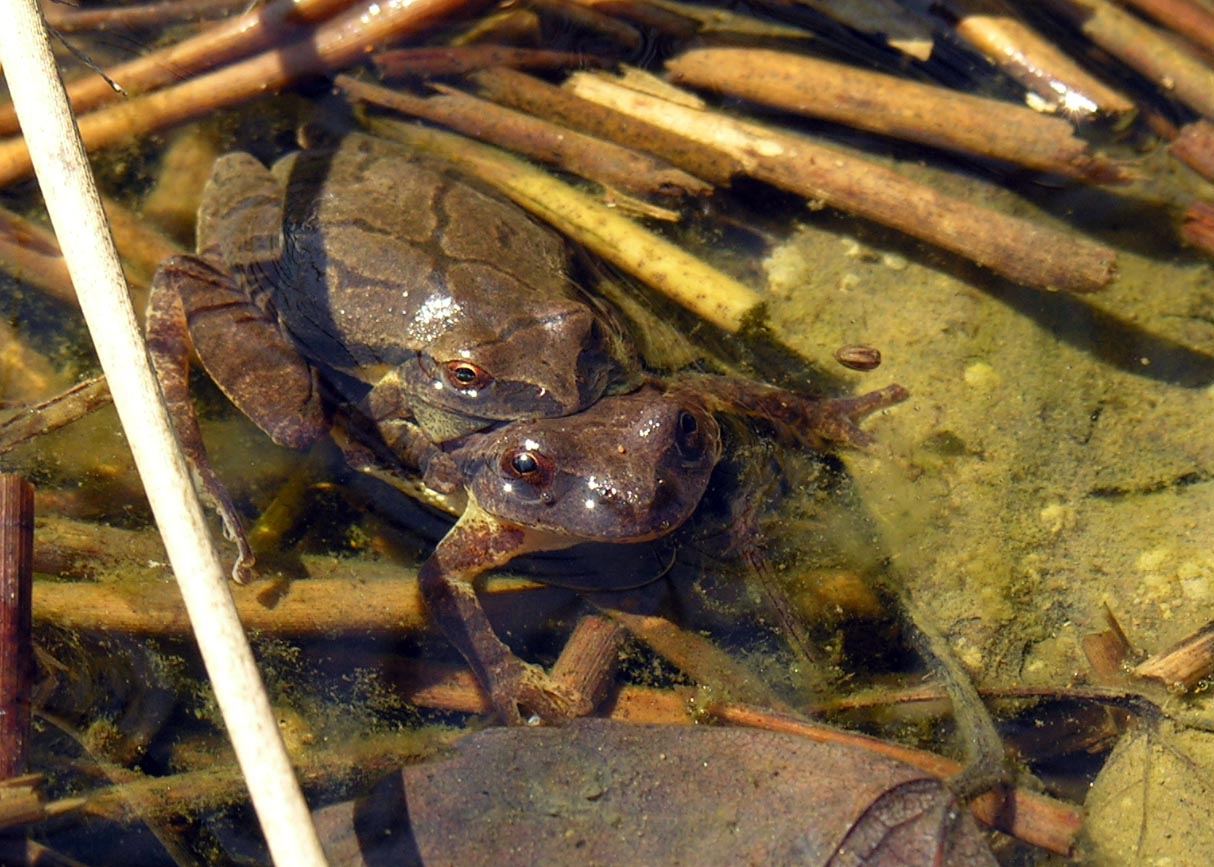Spring Peeper (Hyla crucifer)
Most of us recognize the high shrills of our spring peeper as a significant harbinger of spring. These are our first frog breeders, sometimes beginning as early as late February, but most commonly mid-March. For this important event in the ongoing life of peepers, the tiny frogs migrate to vernal pools, and pond and stream edges in meadows and woodlands, where the competition for mates commences. The males sing two types of songs…one is their ‘announcement or advertisement call’ and the other an ‘aggression call’. Both songs are issued from the approximately 12” diameter territory of each male, with the first call meant to attract females and the second to warn off other males.



Peepers are tree frogs, and when the mating season comes to an end, they return to the woodlands and edge habitats for a mostly solitary existence; eventually hibernating under leaves on the ground through the cold months and withstanding freezing temperatures by producing glucose as an anti-freeze. Their diet consists of small invertebrates.
Six years ago I took it upon myself to do a bit of field research into ‘that noisy bunch of frogs’. Below the north slope of our land lies a cow pasture through which Bridle Creek flows. In the lowest lying land, the meadow becomes a marsh in which our local clan of peepers congregates every spring. Their cacophonous peeping becomes nearly deafening at the height of their frenzy. This marshy area is temporary, so the business at hand must be accomplished before sunny summer days dry it out. It takes 1 ½ to 2 months for the tadpoles to develop into frogs, after a week of gestation. That gives them a window of less the 3 months…which is exactly right for this spot.
When I approached the meadow wetland, the closer I got to the breeders, the less they sang. This was during the early morning hours, but well after first light. From what I have learned, it might be easier to observe them at night, with a flashlight; but with a bit of patience, I was fully rewarded. Once I positioned myself in the middle of the marsh, I squatted and remained motionless. After 10 or 15 minutes they forgot I was there, and got back to work. Surrounding me were dozens of mating pairs along with hopeful males trilling in concert. I returned to this exhibition for several days in a row, watching, listening, and photographing the spectacle.
The first two pictures were taken in the meadow, the third in my yard at night…near a small artificial pond.